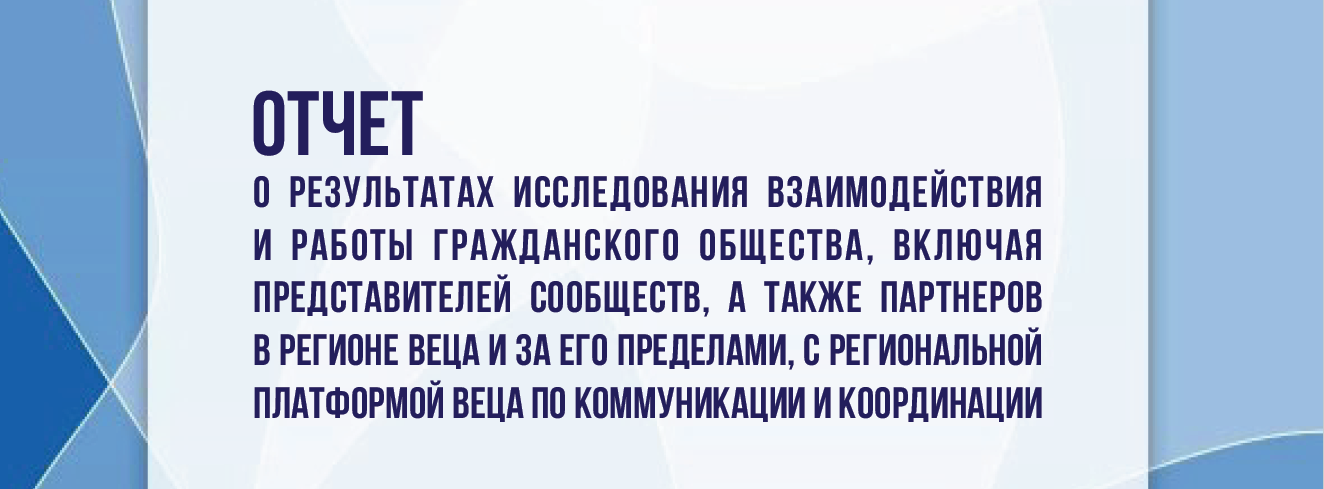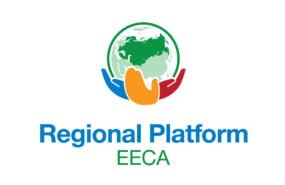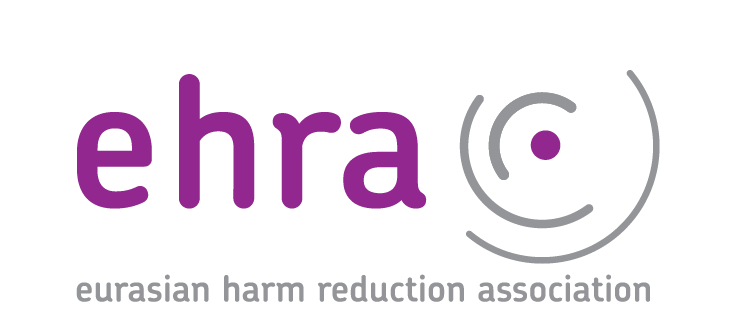Understanding the Global Fund eligibility and transition status of the HIV and TB country components in EECA
- 27.12.2023 19:09
- Post Views: 347
This text is a full version of the article published in GFO Issue 442
This text is an update of the study on the similar topic prepared by the author for Aidspan in 2018[1].
Author: Ivan Varentsov
Since 2014, the requirement of the Global Fund was that all grant programs being developed should contain the transition planning component. The EECA region has already made significant steps in transition planning since then, including the realization of transition readiness assessments, broader sustainability planning, the development of transition work-plans, and the implementation of transition grants. Currently, all countries in the EECA are at a certain stage of transition and are expected to plan within their grant programs for responsible transitioning, especially of those components being of a most priority for the key affected populations. However, sustainability of such components in most EECA countries remains uncertain.
This article provides an overview of the transition status of HIV and TB components of the countries in the EECA as of 2023. As no countries in EECA are eligible for the Global Fund allocation of funding for malaria and there are no active malaria grants in the region, malaria eligibility and transition status are not being considered in this study.
Global Fund’s Eligibility and STC Policies
The Global Fund’s Sustainability, Transition and Co-Financing (STC) Policy [2]outlines (a) the high-level principles for engaging with countries on the long-term sustainability of Global Fund–supported programs, (b) a framework for ensuring successful transitions from Global Fund financing as well as (c) co-financing requirements and associated application focus requirements.
According to the STC Policy, all countries, regardless of their economic capacity and disease burden, should be planning for sustainability and embedding sustainability considerations within national strategies, and program and grant design and implementation. For countries with high disease burdens and fewer resources, the STC Policy emphasizes the need for domestic investments to build resilient and sustainable systems for health and move towards universal health coverage. As countries move along the development continuum –– either by increasing economic resources or lowering disease burden –– expectations are for greater transition planning, as well as for co-financing targeting specific transition challenges and programming for key populations.
Country disease components eligibility for Global Fund allocation is defined by the Global Fund’s Eligibility Policy[3]. The eligibility of each component is based on country’s income classification and disease burden indicator for relevant disease[4][5].
Generally, HIV and TB components could become ineligible if:
- A country moves to High Income (HI) status;
- A country becomes a member of the Organisation for Economic Co-operation and
Development’s (OECD) Development Assistance Committee (DAC);
- A country moves to Upper-Middle-Income (UMI) status and the disease burden for a
component is Not High;
- Disease burden for a UMI component is reclassified as Not High;
Global Fund’s Eligibility Policy allows for up to one allocation of Transition Funding following a country’s change in eligibility (although there could be exceptions, as it is shown in following sections). Transition Funding should be used solely to fund activities included in the country’s transition work-plan.
To support advanced planning and enhance predictability of potential transition timelines, the Global Fund annually produces a list of country components that are most likely to transition from Global Fund financing in upcoming years. Such projections are being based only on potential changes in income classification, and do not take into account potential reductions in disease burden expected.
For the purposes of this overview, all EECA components were divided into the following categories:
- Components which have become ineligible and received an allocation of Transition Funding and are expected to transition in 2024;
- Components which received an allocation of transition funding in 2023–2025 allocation period or were eligible to receive it;
- Components projected to become ineligible in the 2026-2028 allocation period due to change in income status;
- Components expected to focus on sustainability and transition preparedness in 2023 – 2025 (components from UMICs and LMICs with low disease burden);
- Components which still have time for long-term sustainability and transition planning (components from LICs and those LMICs with high disease burden); and
- Other components.
Components which are currently implementing transition funding and expected to transition in 2024.
Components of only one EECA country fit within this category:
- Albania (TB/HIV)
Albania’s HIV/AIDS and TB components moved to transition in 2015 as Albania was classified as an Upper-Middle Income country in the 2015 Eligibility List, with a ‘Low’ disease burden classification. Albania is implementing the Transition TB/HIV grant from the 2017-2019 allocation period, which was extended till the end of 2024[6].
Components which received an allocation of transition funding in 2023–2025 allocation period or were eligible to receive it
The following UMIC components became ineligible due to having their HIV and\or TB disease burden classified as ‘Not High’, but were eligible to receive an allocation of transition funding for 2023–2025 allocation:
- Armenia (HIV)
In 2018 Eligibility list Armenia was categorized as a UMI country and its HIV/AIDS disease burden classification was ‘Not High’. As a result, HIV component became eligible to receive a final allocation of transition funding for the 2020-2022 allocation period and received it. Although this component was eligible for Transition Funding in the 2020-2022 allocation period, in 2022 the Board exceptionally approved an additional period of eligibility for Transition Funding for the 2023-2025 allocation period (GF/B47/DP04)[7]. According to 2023-2025 Allocations Table published at the Global Fund’s website, Armenian HIV component was allocated 6,550,471 USD for this new allocation period.
Armenia’s HIV disease burden classification changed from “Not High” in 2022 to “High” in the 2023 Eligibility List, resulting in one determination of eligibility. Country components must be eligible for two consecutive eligibility determinations to be classified as eligible. This means that if the Eligibility Policy remains unchanged and nothing will change in Armenia’s eligibility criteria status in 2024 – its HIV component could become eligible again to receive allocation for the 2026-2028 allocation period (noting that eligibility does not guarantee an allocation).
- Kosovo (HIV, TB)
In 2019 Kosovo was newly classified as an Upper-Middle Income country based on the latest three-year average of GNI per capita data (Atlas method). Kosovo’s HIV/AIDS and TB burden were (and still remain) ‘Not High’, as a result both the HIV/AIDS and TB components became eligible for Transition Funding for the 2020-2022 allocation period and received it. However, in 2022 the Board exceptionally approved an additional period of eligibility for Transition Funding for the 2023-2025 allocation period (GF/B47/DP04) for Kosovo, for both disease components, noting that eligibility does not guarantee an allocation. According to 2023-2025 Allocations Table published at the Global Fund’s website, Kosovo HIV component was allocated 2,261,907 EUR and its TB component was allocated 897,654 EUR for this new allocation period.
- Romania (TB)
A TB grant of up to €10.3 million is being implemented in Romania throughout 2018-2023 (currently is in Financial Closure stage)[8]. In 2023 Eligibility List the TB burden classification for Romania changed from “High” to “Not high”. Due to this, in accordance with the Global Fund’s Eligibility Policy, the Romania’s TB component is no longer eligible. As Romania TB has an existing grant, it was therefore eligible for Transition Funding in the 2023-2025 allocation period, noting that eligibility does not guarantee an allocation. According to the 2023-2025 Allocations Table, Romania didn’t receive any allocation of Transition Funding.
Projected to become ineligible in the 2026-2028 allocation period due to change in income status
Only one EECA country fells under this category:
- Kazakhstan (HIV, TB)
There were no changes in the eligibility of Kazakhstan’s HIV and TB components and their transition status since 2016, when its HIV disease burden classification was changed to high. According to the Global Fund’s 2023 projections of transition by components[9] Kazakhstan is projected to move to HI status and become ineligible in the 2026-2028 allocation period. If it moves to High Income status, it will not be eligible for Transition Funding.
Components expected to focus on sustainability and transition preparedness in 2023 – 2025 (components from UMICs and LMICs with low disease burden)
As countries move along the development continuum and to higher income categories, they are encouraged to put greater focus on preparing for transition. For upper middle-income countries (UMICs) regardless of disease burden and/or lower middle-income countries (LMICs) with ‘Not High’ disease burdens, the Global Fund encourages a national sustainability and transition planning process which would ideally be informed by a transition readiness assessment or equivalent analysis. It is therefore recommended that such countries should prioritize or build upon existing sustainability and transition planning during the 2023-2025 period[10]. Next EECA countries and their relevant disease components fall under this category:
- Armenia (TB)
This component was eligible in 2017 and received an allocation for the 2017-2019 allocation period. It subsequently became ineligible in 2018 (Armenia’s TB disease burden was classified as Moderate in 2018 Eligibility list); however, this did not impact its 2017-2019 allocation.
Armenia’s TB disease burden classification changed from ‘Moderate’ in 2018 to ‘High’ in the 2019 Eligibility List and after being eligible for two consecutive eligibility determinations Armenia’s TB component was classified as eligible on the 2020, 2021, 2022 and 2023 Eligibility Lists, becoming eligible for the 2020-2022 and 2023 – 2025 allocation periods (and being allocated funding for both periods as well).
- Azerbaijan (HIV, TB), Belarus (HIV, TB), Georgia (HIV, TB)
There were no changes in the eligibility of HIV and TB components of these countries and their transition status at least since 2016 (Georgia’s income category was changed from UMI in 2019 to Upper-LMI in 2020 and back to UMI in 2021).
- Moldova (HIV, TB)
Moldova’s income category was changed from Lower-LMI in 2019 to Upper-LMI in 2020 and to UMI in 2022.
- Montenegro (HIV)
In 2016, Montenegro’s HIV disease burden classification was changed to “high”, and its HIV component was classified as eligible again in the 2017 Eligibility List after meeting eligibility criteria for two consecutive eligibility determinations, for the first time since 2009. Montenegro HIV component received allocations within 2017 – 2019, 2020-2022 and 2023 – 2025 allocation periods.
- Serbia (HIV)
Serbia’s HIV disease burden classification was changed to “high” in 2015. Serbia’s HIV/AIDS component was classified eligible again in the 2016 Eligibility List after meeting eligibility criteria for two consecutive eligibility determinations. Serbia HIV component received allocations within 2017 – 2019, 2020-2022 and 2023 – 2025 allocation periods.
- Turkmenistan (TB)
Turkmenistan’s TB component moved to transition in 2016 as Turkmenistan was classified as an UMI country and Turkmenistan’s TB disease burden category changed from ‘High’ in the 2015 Eligibility List to ‘Moderate’ in the 2016 Eligibility List and to ‘Low’ in 2017 Eligibility List. In 2016 Turkmenistan’s TB component was subsequently allocated $4.0 million in transition funding for 2017–2019. Turkmenistan’s TB disease burden classification changed from ‘Low’ in 2017 to ‘Moderate’ in 2018 and to ‘High’ in the 2019 Eligibility List. After meeting eligibility criteria for two consecutive eligibility determinations Turkmenistan’s TB component was classified eligible in the 2020 Eligibility List. Turkmenistan TB component received allocations within 2020-2022 and 2023 – 2025 allocation periods.
Still have time for long-term sustainability and transition planning (components from LICs and those LMICs with high disease burden)
Although components from low-income countries (regardless of disease burden) and components from LMI countries with high disease burden are not expected to transition from the Global Fund support imminently, according to the Global Fund’s STC Policy, such countries are expected to focus on long-term sustainability planning by supporting the development of robust national health strategies, disease-specific strategic plans and health financing strategies.
There are no low-income countries in EECA region (since Tajikistan’s income category was changed from Lower-LMI in 2020 to LI in 2021 and back to Lower-LMI in 2022). Next components of the following LMI countries with high disease burden fall under this category: Kyrgyzstan (HIV, TB), Tajikistan (HIV, TB), Uzbekistan (HIV, TB), Ukraine (HIV, TB).
There were no changes in the eligibility of these components and their transition status at least since 2016.
The sustainability of HIV and TB responses in Ukraine is under a major threat due to the war imposed by Russia to this country.
Other
There are a few county components in EECA which do not really fit the Global Fund’s sustainability and transition concept and their cases could be considered as an exception from the Eligibility Policy. There are 2 components which could not transition from\to anywhere since they don’t have any active grants currently being implemented although their eligibility status could allow receiving allocation. Also, there is Russian Federation – the only country in the world which receives HIV funding to directly finance non-governmental and civil society organizations due to meeting the eligibility under Paragraph 9b of the Eligibility Policy. Which means that the government in this country clearly demonstrates barriers to providing funding for interventions for key populations and therefore it is hard to expect such interventions to transition from Global Fund’s support to governmental funding and to be sustained.
- North Macedonia (HIV)
North Macedonia doesn’t have any active Global Fund grants (but is a part of the Global Fund multicounty HIV project in EECA). Macedonia’s HIV/AIDS disease burden classification changed from ‘Low’ in 2018 to ‘High’ in the 2019 Eligibility List, resulting in one determination of eligibility. After keeping this status of HIV disease burden for two consecutive eligibility determinations North Macedonia was classified as eligible on the 2020 Eligibility List. But eligibility does not guarantee an allocation and North Macedonia didn’t receive a 2020-2022 allocation. According to the Global Fund 2023-2025 Allocations Table[11], North Macedonia didn’t receive any 2023-2025 allocation for its HIV component either.
- Romania (HIV)
There are no active Global Fund HIV grants in Romania. Since Romania has high HIV disease burden but is not on the OECD DAC list of ODA recipients, Romania may be eligible for an allocation for HIV for non-governmental or civil society organizations under Paragraph 9b of the Eligibility Policy only if there are demonstrated barriers to providing funding for interventions for key populations, as supported by the country’s epidemiology. In 2020 and 2022 the Secretariat has conducted assessments and has determined that Romania does not meet the requirements under Paragraph 9b of the Eligibility Policy. Thus it did not receive an allocation for the 2020-2022 allocation period and was determined not to be eligible for an HIV allocation for the 2023-2025 allocation period as well.
- Russian Federation (HIV)
Since the Russian Federation is not on the OECD DAC list of ODA recipients, the Russian Federation may be eligible for an allocation for HIV for non-governmental or civil society organizations under Paragraph 9b of the Eligibility Policy only if there are demonstrated barriers to providing funding for interventions for key populations, as supported by the country’s epidemiology.
In 2022 the Global Fund Secretariat has conducted an assessment and has determined that the Russian Federation meets the requirements under Paragraph 9b of the Eligibility Policy. Therefore, the Russian Federation has been determined to be eligible for an HIV allocation for the 2023-2025 allocation period and received an allocation of 10,010,167 USD. Russia also was considered eligible and received allocation for the previous, 2020 – 2022 allocation period.
In Russia the government is not involved into implementation, coordination and oversight of the Global Fund HIV grant. The Coordinating Committee (CCM analogue) is totally composed of civil society and communities’ representatives. Taking this into account, as well as the current political situation in country, disabling environment for NGOs including those working in the area of HIV response among KAP, repressive laws against LGBTQ communities, denial of the harm reduction approach to HIV prevention among PUD at the governmental level, very limited opportunities for advocacy without a risk of repressions, as well as relatively insignificant amount of Global Fund allocation in comparison with the scale of HIV epidemic in Russia to expect any significant impact – it is difficult to expect or even plan any “transition” from Global Fund support to governmental funding to sustain the HIV response among KAPs to take place in Russia in nearest future.
The following table provides a list of the components in the various categories discussed above.
Table: Components in the various categories of transition from Global Fund support
| Components which are currently implementing transition funding and expected to transition in 2024 | Components who received an allocation of transition funding in 2023–2025 allocation period or were eligible to receive it | Projected to become ineligible in the 2026-2028 allocation period | Components expected to focus on sustainability and transition preparedness in 2023 – 2025 | Still have time for long-term sustainability and transition planning | Other |
| Albania (HIV/TB) | Armenia (HIV)* Kosovo (HIV, TB) Romania (TB) | Kazakhstan (HIV, TB) ** | Armenia (TB) Azerbaijan (HIV, TB) Belarus (HIV, TB) Georgia (HIV, TB) Moldova (HIV, TB) Montenegro (HIV) Serbia (HIV) Turkmenistan (TB) | Kyrgyzstan (HIV, TB) Tajikistan (HIV, TB) Uzbekistan (HIV, TB) Ukraine (HIV, TB) | North Macedonia (HIV) Romania (HIV) Russian Federation (HIV) |
* If Armenian HIV disease burden status remains “high” in 2024, its HIV component could become eligible again to receive allocation starting from 2025
** If Kazakhstan income status will change into “High” it will not be eligible for Transition Funding.
[1] Status of transitions from Global Fund support in the EECA region https://aidspan.org/status-of-transitions-from-global-fund-support-in-the-eeca-region/
[2] The Global Fund Sustainability, Transition and Co-financing Policy https://www.theglobalfund.org/media/4221/bm35_04-sustainabilitytransitionandcofinancing_policy_en.pdf
[3] Global Fund Eligibility Policy as approved at the forty-seventh Global Fund Board Meeting (10-12 May 2022) Decision Point GF/B47/DP03 https://www.theglobalfund.org/media/7443/core_eligibility_policy_en.pdf
[4] Income classification is determined by using an average of available GNI per capita data over the latest three-year period and the latest World Bank income classification thresholds. Disease burden is measured using the latest available official data provided to the Global Fund by WHO and UNAIDS.
[5] According to the he Global Fund’s Eligibility Policy, all low and lower-middle income countries are eligible regardless of disease burden (unless malaria-free), while upper-middle income countries must meet specific disease burden criteria and thresholds as defined in the policy. Eligibility does not guarantee an allocation.
[6] Hoxha B. Republic of Albania: Assessment of the sustainability of the opioid agonist therapy programme in the context of transition from donor support to domestic funding. Eurasian Harm Reduction Association: Vilnius, Lithuania, 2023. p. 16. https://eecaplatform.org/en/oat-albania/
[7] Decision was based on the Strategy Committee and the Secretariat recommendation which is in line with the spirit of footnote 18 of the Eligibility Policy which notes that the “Secretariat may exceptionally request on a case-by-case basis that the Global Fund Board approve one additional allocation of Transition Funding in order to allow for the financing of critical transition activities that are essential to supporting transition from Global Fund financing”. Besides Armenian HIV component that decision impacted Kosovo HIV and TB components and 3 more components from other regions.
[8] Country overview description in Data explorer at the Global Fund website https://data.theglobalfund.org/location/ROU/overview
[9] The Global Fund. Projected transitions from Global Fund country allocations by 2028: projections by component. February 2023 update. https://www.theglobalfund.org/media/9017/core_projectedtransitionsby2028_list_en.pdf
[10] Ibid
[11] 2023-2025 Allocations Table https://www.theglobalfund.org/media/12674/fundingmodel_2023-2025-allocations_table_en.xlsx
Related News
Services for migrants and refugees from Ukraine – HIV/TB care with a focus on key populations
Due to the increasing flows of refugees from Ukraine because of Russia’s invasion of Ukraine, the EECA Regional Platform created a spreadsheet to fill contacts details of face-to-face and online services for refugees and migrants (with a focus on HIV/TB care and key population groups).
Regional Platform – EECA
This web-resource is a part of new regional communication and coordination project “Regional Civil Society and Community Support, Coordination and Communication Platform - EECA”, implemented by Eurasian Harm Reduction Association (EHRA).
Tags
See also
-
EECA’s Regional Platform monthly Newsletter #19, December 2025 15.12.2025 10:59
-
EECA’s Regional Platform monthly Newsletter #18, November 2025 26.11.2025 16:20







